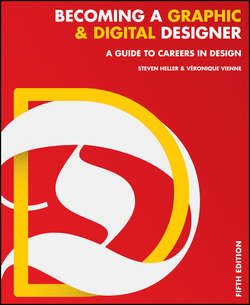Читать книгу Becoming a Graphic and Digital Designer - Heller Steven - Страница 10
Part 1
Graphic Design
Chapter 1
Inspirations and Motivations
Arnold Schwartzman
Still Designing after All These Years
ОглавлениеArnold Schwartzman is a graphic designer and an Oscar®-winning documentary filmmaker. As a young child during WWll, he survived the enemy bombing of his home in London; consequently, he was sent to the countryside and to the village school there. Because he was not able to catch up with the much older pupils in his class, his teacher gave him cards and foreign stamps to keep him busy. “It was a blessing in disguise,” he notes, and “as a result, I grew up in a visual, nonliterary world.” He ultimately enrolled at the local art school to learn to be a commercial artist. Schwartzman began his career in British network television, moving on to become an advertising art director, and later he joined the board of directors of Conran Design Group, London. In 1978, he was invited to Los Angeles by Saul Bass to become the design director for Saul Bass and Associates. Later, on the recommendation of Bass, he produced and directed the 1981 Oscar-winning documentary feature film, Genocide. Since then he has designed Oscar posters, programs, billboards, cinema trailers, and related collateral print for the annual Academy Awards; created two murals for the grand lobby of Cunard's Queen Elizabeth; and designed the UN Peace Bell Memorial for South Korea.
Peter and the Wolf
Illustrations for television gala program, narrated by Richard Attenborough
Art Director/Designer: Arnold Schwartzman
1960
You've been practicing graphic design for almost six decades. How has it changed, and how has it remained the same?
Apart from the craft's ever-changing nomenclature, my thought process has not changed. I believe that the concept must come first, form later. My first job in 1959 was as a graphic designer for a British television station, where all programs where transmitted in black and white and went out live. Apart from my not too perfect hand-drawn lettering, the only other method available to me for producing text was the limited fonts of Letraset. This was before the introduction of rub-down type. Each letter had to be cut out from a sheet and laboriously transferred onto a cotton screen, then pressed down onto the artwork.
Do you actually consider yourself a graphic designer, or is there another rubric?
Yes, I consider myself to be first and foremost a graphic designer, but other add-ons include filmmaker, illustrator, animator, photographer, author, and also sometimes muralist and sculptor!
Today, graphic design is no longer static. You began making films a while ago. How did you transition from paper to film?
My transition from paper to film was quite seamless. I made my first film shortly after graduating from art college, during my military service in the British Army in South Korea, where I purchased an 8-mm camera and projector from the U.S. Army PX Store. My film of postarmistice Korea is considered an historic document, and the footage is now housed in London's Imperial War Museum. I eventually moved from the local television station to Britain's premiere TV network. There I had the opportunity of working with an animation camera and was able to experiment with the rudiments of animation, which finally led to working in live action.
Death by Choice
Art Director/Designer: Arnold Schwartzman
Client: BBC
1960s
How do you remain fresh as a designer, after so many years?
Style seems to go out of fashion quickly; good ideas will never lose their appeal.
Would you say that yours is a style or an attitude?
I do very much envy designers that have a distinctive style. I don't know if one could immediately recognize a Schwartzman design. So I suppose it must be an attitude of thinking. I was amused to read recently that my work was considered to be surreal. I rather liked that! I love research, and many of my ideas and films look to the past. I don't seem to have the capacity to think visually into the future.
What one piece of wisdom would you impart to young designers?
The key word is to bring passion to everything you do.
RSG Logo
Logo for television program Ready, Steady, Go!
Art Director/Designer: Arnold Schwartzman
1963
